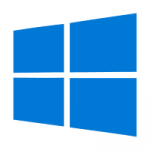 Earlier this month, Mozilla released a new version of its free — and still excellent — email client: Thunderbird 78.0.
Earlier this month, Mozilla released a new version of its free — and still excellent — email client: Thunderbird 78.0.
Notable changes in Thunderbird 78.0
A total of fourteen security vulnerabilities are addressed in Thunderbird 78.0. That means it’s a good idea to install the new version as soon as possible; email clients are a popular attack vector for malware.
- The compose window has been reworked subtly, to improve usability.
- The recipient address fields (To, Cc, and Bcc) have been changed so that addresses are parsed into ‘pills’, and take less space.
- The account setup screens have been changed to make them easier to understand.
- The mail folder icons have been updated and can now be assigned custom colours.
- On Windows, Thunderbird can now be minimized to the tray (aka the notification area) at the end of the task bar.
- There’s now a global search box on the main window’s title bar. The display of global search results has been improved.
The release notes and What’s New page for Thunderbird 78.0 describe all the changes in the new version.
Getting Thunderbird 78.0
The new version is not yet available through the built-in updater, but it can be freely downloaded and installed from its main download page. If you’re already using Thunderbird and want to upgrade to 78.0, you can install it from the main download page and it will update your current version, leaving all your settings intact.
Mozilla released Thunderbird 78.0.1 a few days after 78.0. The new version addresses a few problems introduced by 78.0. That’s the version you’ll get if you go to the main Thunderbird download page.
 boot13
boot13 Oracle recently released its
Oracle recently released its  Another month, another load of patches from Microsoft.
Another month, another load of patches from Microsoft. Mozilla released
Mozilla released  A new version of Flash was released by Adobe earlier this week.
A new version of Flash was released by Adobe earlier this week. With Windows 10, Microsoft shifted a lot of their testing to users, through the
With Windows 10, Microsoft shifted a lot of their testing to users, through the  Adobe once again tags along this month, with new versions of Reader and Acrobat. Most people use the free version of Reader, officially known as Acrobat Reader DC. The new version,
Adobe once again tags along this month, with new versions of Reader and Acrobat. Most people use the free version of Reader, officially known as Acrobat Reader DC. The new version,